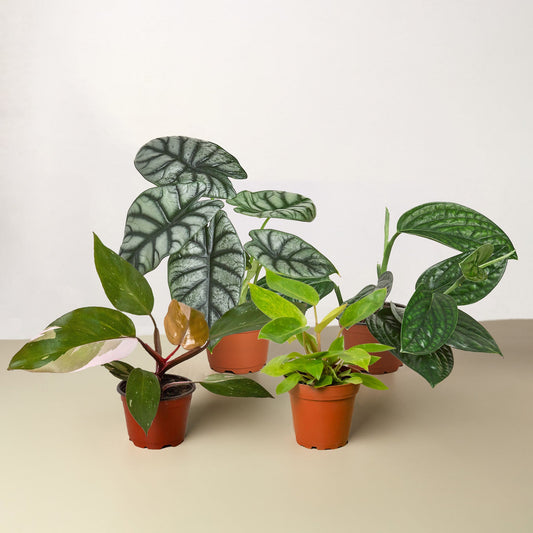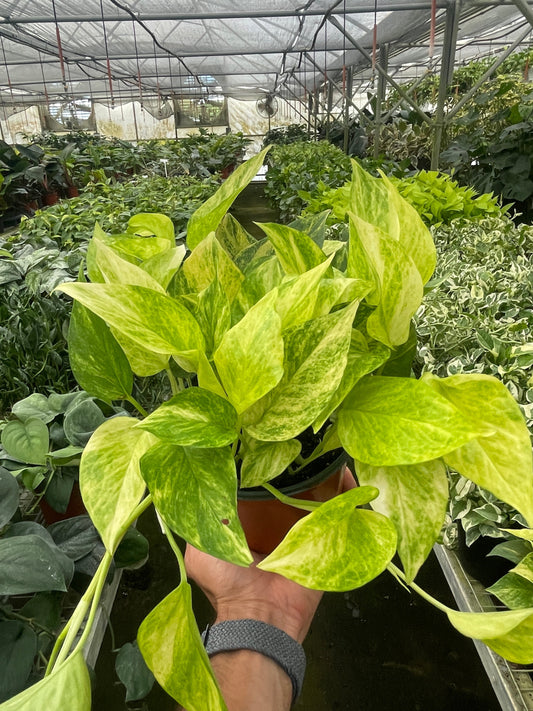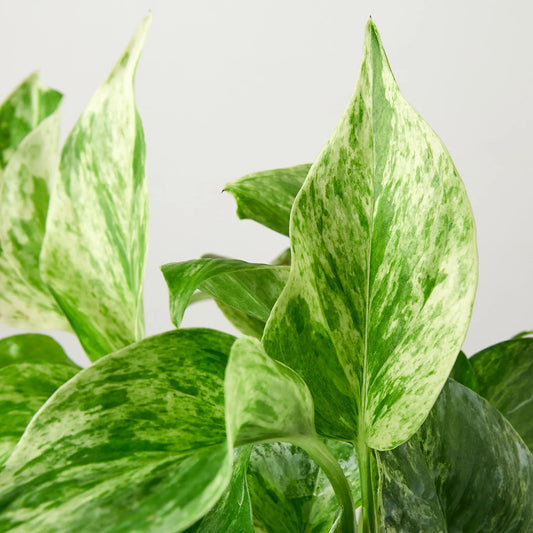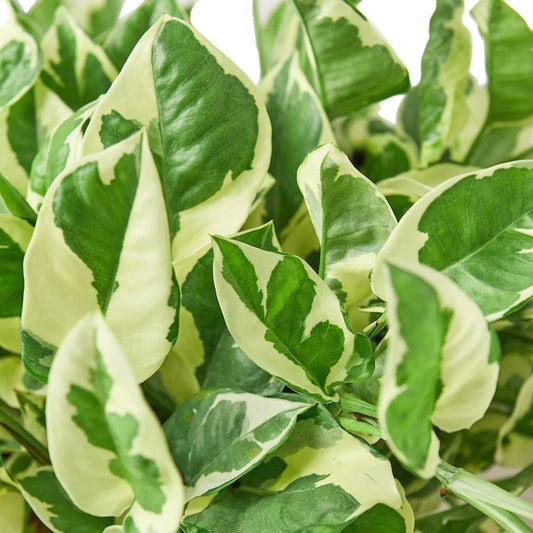Philodendron Plowmanii Aerial Roots: Everything You Need to Know
Cafe Planta Team
Have you ever looked at your Philodendron Plowmanii and noticed those intriguing, wispy roots hanging from the stems? These are aerial roots, a fascinating feature of many tropical plants. But what purpose do they serve, and how should you care for them?
In this article, we'll explore everything you need to know about Philodendron Plowmanii aerial roots. From understanding their role in the plant's health to practical care tips and even some creative ways to incorporate them into your home decor, we've got you covered.
What Are Aerial Roots?
Aerial roots are specialized roots that grow above the ground. Unlike the roots you're used to, which burrow into the soil, aerial roots can hang from the stems or even grow outwards, looking for something to latch onto. In the wild, these roots help the plant climb trees and absorb moisture from the air, which is crucial in tropical climates where the Philodendron Plowmanii originates.
For your indoor Philodendron, these roots are still functional, but their role is a bit different. They help the plant anchor itself if you provide a support structure, like a moss pole or a trellis, and can assist in water absorption, especially if your home tends to be on the dry side. Think of aerial roots as your plant's built-in hydration system!
Understanding aerial roots can help you better care for your Philodendron. They’re not just there for looks—they play a vital role in the plant's overall health and well-being. By paying attention to these roots, you can gain insights into what your plant might need, whether it's more humidity or a climbing structure to stretch its leafy muscles.
Why Does Philodendron Plowmanii Grow Aerial Roots?
The growth of aerial roots in Philodendron Plowmanii is a natural adaptation to its native environment. In their natural habitat, these plants grow as epiphytes, meaning they live on other plants and use their aerial roots to climb and access sunlight. This adaptation helps them thrive in rainforests, where sunlight is a precious commodity.
When you bring a Philodendron Plowmanii into your home, it retains these evolutionary traits. Aerial roots develop as the plant searches for a way to climb and stabilize itself. If you notice your plant's aerial roots growing more vigorously, it might be signaling that it would appreciate a bit more support or humidity. Consider adding a moss pole or trellis to give it something to hold onto.
Interestingly, the length and number of aerial roots can also give you clues about your plant's environment. For instance, longer roots might indicate that your plant is seeking more moisture. Meanwhile, a lack of aerial root growth might mean your plant is content with its current conditions—or that it needs more prompting to climb. Observing these roots can help you tailor the conditions to better suit your plant's needs.
Caring for Philodendron Plowmanii Aerial Roots
Caring for the aerial roots of your Philodendron Plowmanii is relatively straightforward, but it does require some attention. First, ensure that the air around your plant is humid enough. Aerial roots absorb moisture from the air, so maintaining a humidity level around 60% can encourage healthy root growth. If your home is on the dry side, consider using a humidifier or placing a pebble tray with water near your plant.
Next, think about the support structure. Aerial roots are most beneficial when they have something to attach to. Moss poles are a popular choice because they mimic the plant's natural environment. Simply insert a moss pole into your plant's pot and gently guide the aerial roots toward it. Over time, they’ll wrap around the pole, helping the plant grow taller and more robust.
Finally, don't forget about occasional misting. While the roots can gather moisture from a humid environment, a light misting once or twice a week can give them a little boost. Just make sure not to overdo it, as too much water can lead to rot. By following these simple steps, you can ensure your Philodendron Plowmanii's aerial roots stay healthy and contribute to the plant's overall growth.
Common Issues with Aerial Roots
Like any plant feature, aerial roots can encounter problems. One common issue is dryness or shriveling, often due to insufficient humidity. If you notice your aerial roots drying out, increasing the humidity around your plant might help. Try grouping your plants together, as this can create a micro-humidity environment, or invest in a small humidifier to keep the air moist.
Another potential problem is root rot, which can occur if the aerial roots are constantly wet and not allowed to dry out between waterings. This can be a tricky balance to strike, but usually, ensuring good air circulation around your plant can mitigate the risk. If you notice mushy or blackened roots, it may be time to cut back on misting and allow for more airflow.
Sometimes, aerial roots might become damaged or break. If this happens, don’t panic. Just trim the damaged part with sterilized scissors to prevent any potential infections. Overall, keeping an eye on your plant’s aerial roots can provide valuable insights into its health and environment, allowing you to make adjustments as needed.
Pruning and Trimming Aerial Roots
Pruning aerial roots might sound intimidating, but it's a straightforward process that can benefit your Philodendron Plowmanii. If the roots become unruly or start to extend beyond what you’re comfortable with, it's okay to trim them back. Use sharp, sterilized scissors to make clean cuts, which helps prevent disease.
While pruning, aim to cut the roots back to a manageable length without removing them entirely. Aerial roots are important for the plant, so you don’t want to eliminate them completely. Keep in mind that the plant’s appearance might change slightly after pruning, but it usually recovers quickly and continues to thrive.
Pruning isn’t just about aesthetics; it can also prevent potential issues. For example, if your plant is leaning heavily to one side due to uneven root growth, trimming might help restore balance. Regularly monitoring and trimming your aerial roots can keep your plant looking its best while ensuring it remains healthy and stable.
Incorporating Aerial Roots into Home Decor
Philodendron Plowmanii's aerial roots can add an intriguing element to your home decor. These roots can create a unique, jungle-like vibe, making your plant stand out as a statement piece. If you’re looking to enhance your home’s aesthetic, consider using the aerial roots in creative ways.
One idea is to train the roots along a decorative trellis or wall. As the roots grow, they’ll weave through your chosen structure, creating a living piece of art. This setup not only looks stunning but also provides the plant with the support it needs to grow healthily.
Another option is to use the roots as part of a hanging installation. By suspending your Philodendron from the ceiling, you can let the aerial roots dangle freely, creating an eye-catching focal point. This approach works well in spaces with high ceilings or as part of a larger plant display.
Propagating Philodendron Plowmanii with Aerial Roots
Did you know you can use aerial roots to propagate your Philodendron Plowmanii? This method is relatively easy and can help you grow new plants to share with friends or add to your collection. Here’s a simple way to do it:
- Identify a healthy, mature stem with at least one aerial root and a few leaves.
- Using sterilized scissors, cut the stem just below the aerial root.
- Place the cutting in a container with water, ensuring the aerial root is submerged.
- Change the water every few days to keep it fresh and prevent bacteria buildup.
- Once the cutting develops a solid root system, transfer it to soil and watch it grow!
This propagation method takes advantage of the aerial roots’ natural ability to absorb moisture and nutrients, making it a straightforward way to create new plants. It’s a fun project that can deepen your appreciation for your Philodendron and its unique features.
Enhancing Plant Health Through Aerial Roots
Aerial roots play a crucial role in maintaining your Philodendron Plowmanii's health. They help the plant anchor itself, absorb moisture, and even gather nutrients from the air. By taking good care of these roots, you're supporting the plant's overall well-being.
Consider incorporating a regular check of the aerial roots into your plant care routine. Look for signs of dryness or damage, and adjust humidity levels or support structures as needed. Healthy aerial roots not only contribute to the plant's growth but also indicate that your Philodendron is thriving in its environment.
Remember, healthy roots lead to a healthy plant. By focusing on maintaining the aerial roots, you're ensuring your Philodendron Plowmanii remains vibrant and lush. So, don't overlook these fascinating features—they’re essential for your plant's success.
Final Thoughts
We’ve covered quite a bit about Philodendron Plowmanii aerial roots, from their purpose in the plant world to practical care tips. Understanding these roots can greatly enhance your plant's health and vitality, making your indoor jungle even more lush and inviting.
At Cafe Planta, we're all about helping you keep your plants happy and healthy. Whether you're looking for new plant additions or need advice on plant care, we're here to help. Feel free to email us or reach out on Instagram. We believe in the power of plants to bring people together, and we're excited to support you on your plant journey!



















